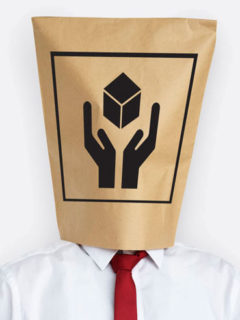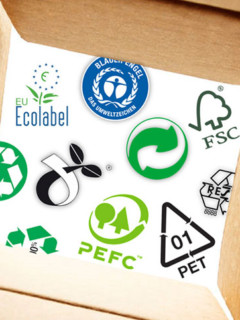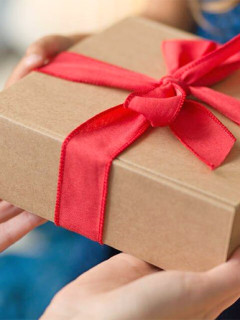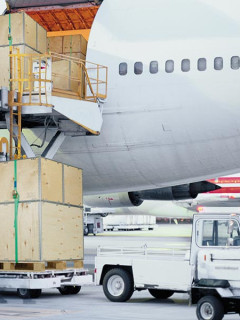With over 1,250 sizes of cardboard boxes to choose from, at RAJA we can safely say that we do have a box to suit any product. Once your parcel has been successfully delivered, the question is what to do with the cardboard. In this article, we therefore look at all aspects of the further processing of both cardboard and paper.
The history of the RAJA Group shows that recycling has been part of our business philosophy from the very beginning. What many may not know is that RAJA has offered recycled cardboard boxes since its establishment in 1954. That range was expanded for decades, making RAJA Europe’s number one packaging company. Even today, eco-friendly products are still at the heart of our business.

1. Why is the recycling of paper and cardboard so important?
Paper and cardboard share the same raw material: wood (or, to be more precise, wood fibre). Wood is a fully renewable product. We can plant, grow and prune/trim trees in an endless cycle. Unfortunately. due to the rising demand for wood, the pressure on logging is increasing.
Fortunately, we can recycle paper and cardboard just fine which takes a lot of pressure off. Recycling completes the raw material circle and contributes to a circular economy: today’s waste products become tomorrow’s raw materials. This is how we optimally avoid waste!
- Fewer trees need to be cut down.
- Lower CO2 emissions (paper is collected close to home and processed domestically).
- Less water and electricity is needed during production.
2. Reuse, composting or recycling?
What can you or your customers do with a used paper carrier bag or cardboard box? Here we look at the 3 most popular uses from a sustainability perspective: reuse, compost and recycle.
► Reuse
Why throw away something that is still usable? Many consumers reuse an old box to return goods, for example. And a paper bag still does a great job when shopping.
For those who want to go a step further, there is the concept of ‘upcycling’: in this case, you give your carrier bag or box a completely new function. Look here for some examples of upcycling packaging materials. And finally, if you work in a warehouse, you can use your discarded cardboard boxes to make padding material. Yes indeed! All you need for this is a cardboard perforator.
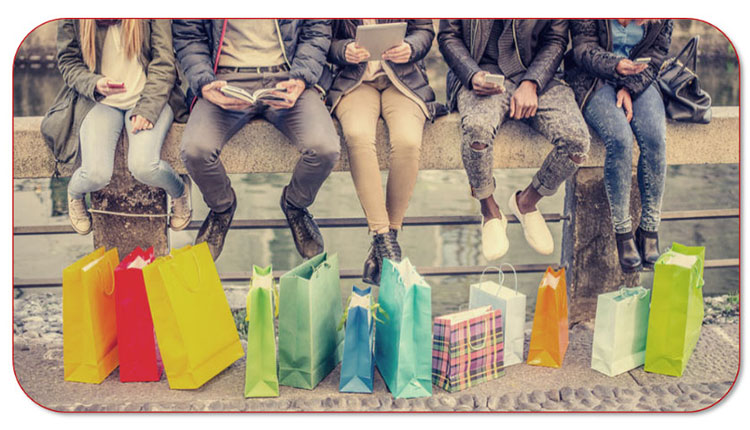
► Compost
Paper and cardboard are made from wood: an organic raw material. Its great advantage is that it can be naturally degraded by the environment. For those who want to give that a try in their home compost pile, here are these tips:
- First cut the cardboard/paper into small pieces. The smaller the better.
- Then wet everything thoroughly. A moist environment will significantly speed up the composting process.
- Lay brown paper, cardboard, dead leaves and kitchen waste on top of each other. Together they form an ideal nutrient medium.
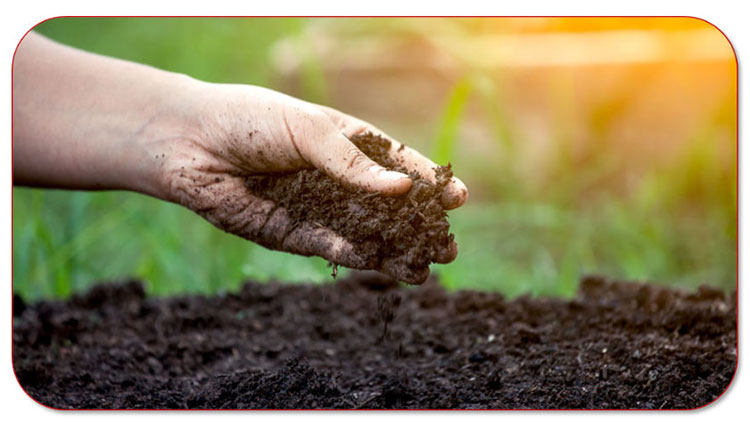
► Recycle
Unlike composting, recycling offers more opportunities. By recycling, you complete the waste cycle and need to cut down fewer trees. For businesses, this processing method is the most recommended.
- In the Netherlands, some 87% of waste paper and cardboard is recycled.1
- On average, RAJA’s cardboard boxes consist of 75% recycled material.
- Cardboard can be recycled up to 10 times.
- Paper can be recycled up to 7 times.
Every time old paper is recycled again, the composition of the wood fibres changes. Throughout the recycling cycle, paper is therefore processed into different end products.2 For example, old paper may first get a new life as writing paper, only to end its existence as a cardboard box after subsequent recycling cycles.
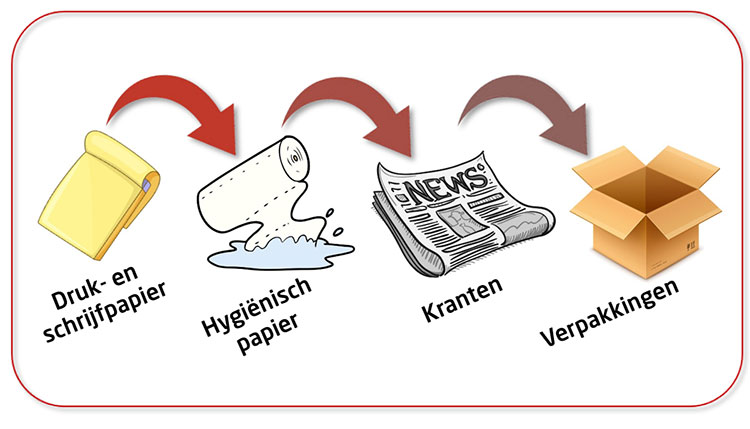
3. How does the recycling of old cardboard look like?
Before taking waste paper or cardboard to the waste collector, it is best to prepare it correctly:
- Remove all staples or tape. A bit of plastic tape is not so bad (there is a tolerance of 3% impurities). If there is paper tape or gummed adhesive tape sticking to your box, you may leave it. You can recycle these along with your box without a problem.
- Then flatten your box.
- Keep the paper and cardboard waste dry. This makes it easier to process at the paper mill.
After the waste paper and cardboard arrives at the paper mill, it will go through a whole series of processes.3 The end result is a new product that people can use for consumption again just fine.
- Step 1: the paper and cardboard are mixed with water and processed into pulp. During this process, any remaining staples, plastic or string are removed.
- Step 2: after this, the pulp is de-inked and bleached.
- Step 3: the white pulp is pressed and dried.
- Step 4: the new paper is ready for further processing.
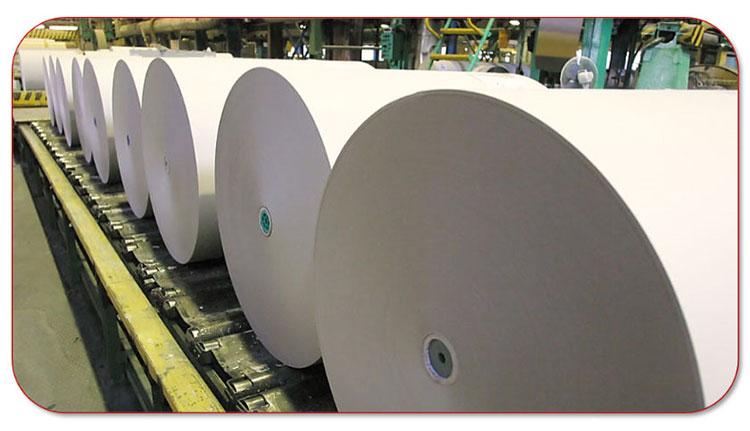
4. Facts and figures about paper and cardboard
-
Paper is about 2,000 years old and was invented in China. In the Middle Ages, it arrived in Europe via Arab traders.
-
The cardboard box can blow out more than 200 candles. The first cardboard box came on the market in England in 1817.
-
From 1,000 kg of waste paper, an average of 20 to 25 kg of waste is extracted (e.g. staples, string, tape).
-
Coca-Cola is working with a Danish company to develop a paper bottle. The aim is to replace all plastic bottles in the future.4
-
Research shows that 51% of consumers prefer paper material for filling a box.5
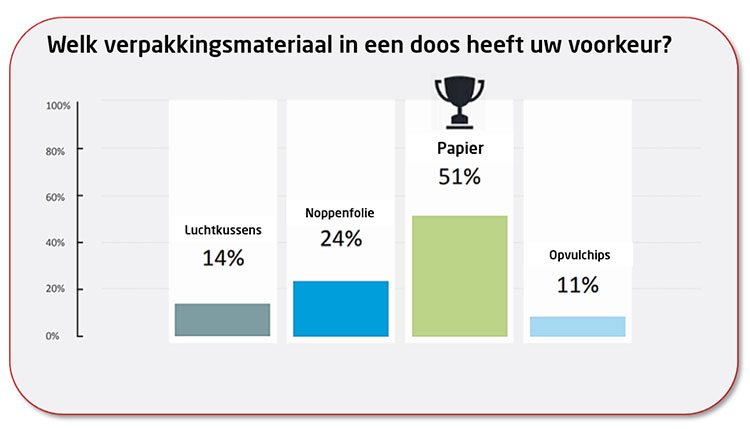
Sources:
1 www.nedvang.nl/recycling-nederland/oud-papier-karton/
2 www.paperchainforum.org/nl/papier-en-recyclage.php
3 www.fostplus.be/nl/sorteren-recycleren/alles-over-recyclage/papier-karton-recycleren/
4 www.nl.cocacolabelgium.be/stories/een-papieren-fles-in-elke-hand/
5 www.ranpak.com/ecommerce











